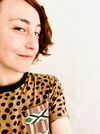Hand to hand: when Social Ecology meets Circus Arts Practices
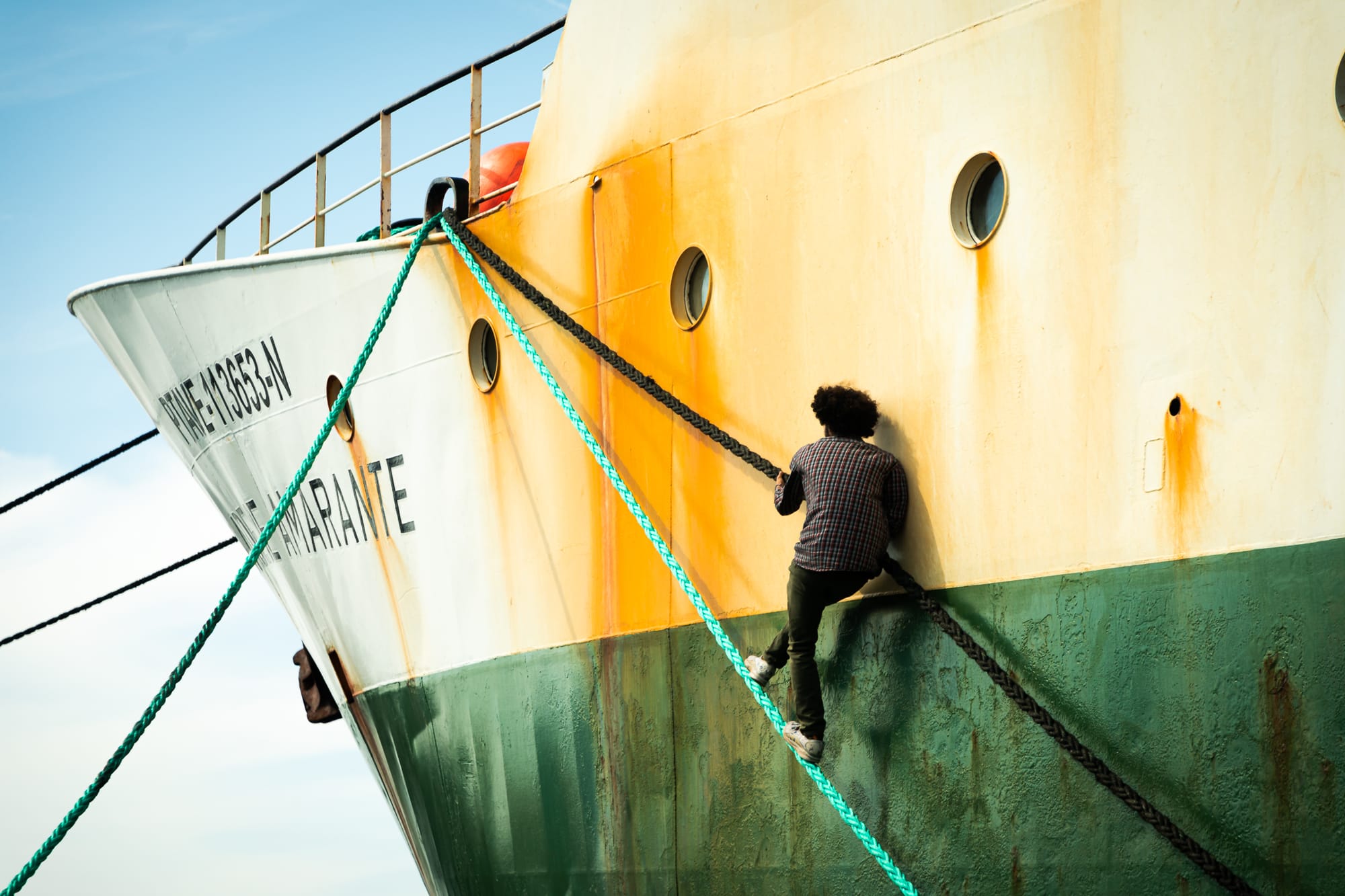
Can contemporary circus in public spaces contribute to the sustainable development of circus disciplines while being creatively enriched by locally rooted connections? Yes, with the significant support of Social Ecology, the research branch examines how individuals interact with their environment, how their habitat shapes them, and how these interactions influence society and the environment. The European Project Hand to hand is concluding after two years of exploration, merging the creativity of contemporary circus arts as a medium of expression. It roots itself in the realm of unconventional public spaces, nourished by the expertise of locally private firms in the four participating countries: Croatia, Portugal, Denmark, and France. Before the project’s public conclusion at the 2025 edition of Furies festival in Châlons-en-Champagne, I attended the presentation of seven artistic projects in Split during the last edition of the Peculiar Families Festival. Nourished by collective laboratories, firm visits, and local artistic residencies, here’s a glimpse of the diverse themes and landscapes that shaped these unique creative research outputs.
Hand to hand is a contemporary circus exploration in public space, questioning collectively the notion of social ecology. Co-funded by the Creative Programme of the European Union, the project started in 2023 and is about to end this July 2025. It is led by Le Palc, the national circus centre in France, in partnership with Bússola in Portugal, Helsingør Theatre in Denmark and ROOM 100 in Croatia.
The artistic project aimed to explore, over two and a half years, the issues of sustainability through learning and experiential research spaces for circus artists. Especially emerging artists in their artistic practice in public space need to develop new capacities for initiating such a transition, transforming artistic and methodological practices in public space for sustainability. To enrich the research prototypes, Hand to hand has gathered an enriching experience engaging mentors, researchers, private firms, and cultural and creative industries actors who have been actively involved in the whole process.
During the two years’ trajectory, 8 selected artists have followed a journey of four exploration periods in the four countries and collaborated through immersion residencies with private firms such as Joseph Perrier, French champagne house; Fila Arches, French paper mill of art; Ston Salt marshes in Croatia; a maritime workshop for the renovation of wooden boats at Hall 16, and a professional fisherman firm, fisherman Soren Jacobsen, in Denmark; a Codfish Harbor and the codfish packaging of Ílhavo, distant water fishing in Portugal. In every project’s local stage, the selected artists shared with each country’s audience their artistic prototypes, settled during the four partner festivals: Passage festival by Helsingør Teater in Denmark, LEME festival in Ílhavo, Portugal, Peculiar Family festival in Split, Croatia, and Furies festival in Châlons-en-Champagne, France.
To know more about the project, read the Open Call, and to get deeper into the activities, visit the Hand to hand video gallery.
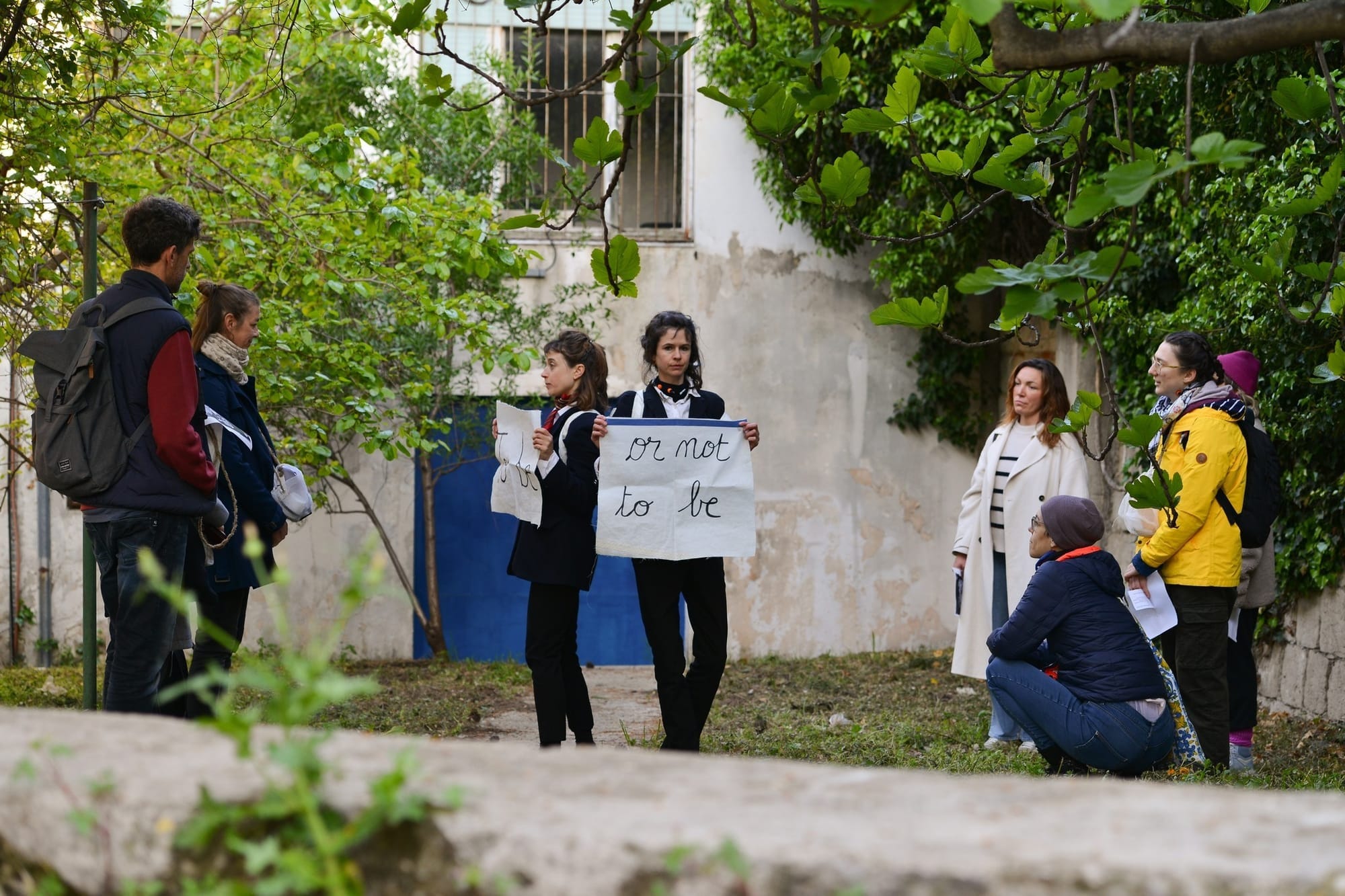
PORØS, an itinerant performance for looking at the city with new eyes
PORØS is the artistic encounter between the French verticalist Mathilde Roy and the German-Israeli verticalist and acro-dancer Darya Efrat. Darya is a performance and installation creator who moves with, between, and about space, material, people and their bodies. Her works attempt to reconcile questions concerning identity, gender, and belonging, nurtured by her studies in New York at Columbia University's arts and anthropology departments, combined with a Master's in New Performative Practices at the Stockholm University of the Arts.
Mathilde got closer to the arts of dance and clowning after studying at circus schools (Ésacto’ Lido and CRAC in Lomme). Curious about all means of expression, her particular approach to the circus technique of hand balancing is to seek several ways of freeing the body in an apparently fixed discipline. With Paul-Cretin Sombardier, she is the co-founder of Muchmuche Company, which designs artistic projects for public space, non-dedicated spaces and hybridises the circus arts, dance and the visual arts.
In the frame of the Hand to hand project, Mathilde and Darya researched as a duo at the Helsingør Maritimt Værksted Hal 16 - and created PORØS, a performative walk inspired by an immersion residency in a maritime workshop for the renovation of wooden boats and a professional fisherman. PORØS is a poetic work on departure and transition, a guided and poetic tour of the city of Split in the early morning. What place is dedicated to the physical and mystical presence of the sea nowadays? The group embarked on a silent and intimate walk connecting to the sea, environment and local stimuli. The moment of sunrise helps reflect around darkness and light, contributing to the audience's discovery of a different way of seeing things.

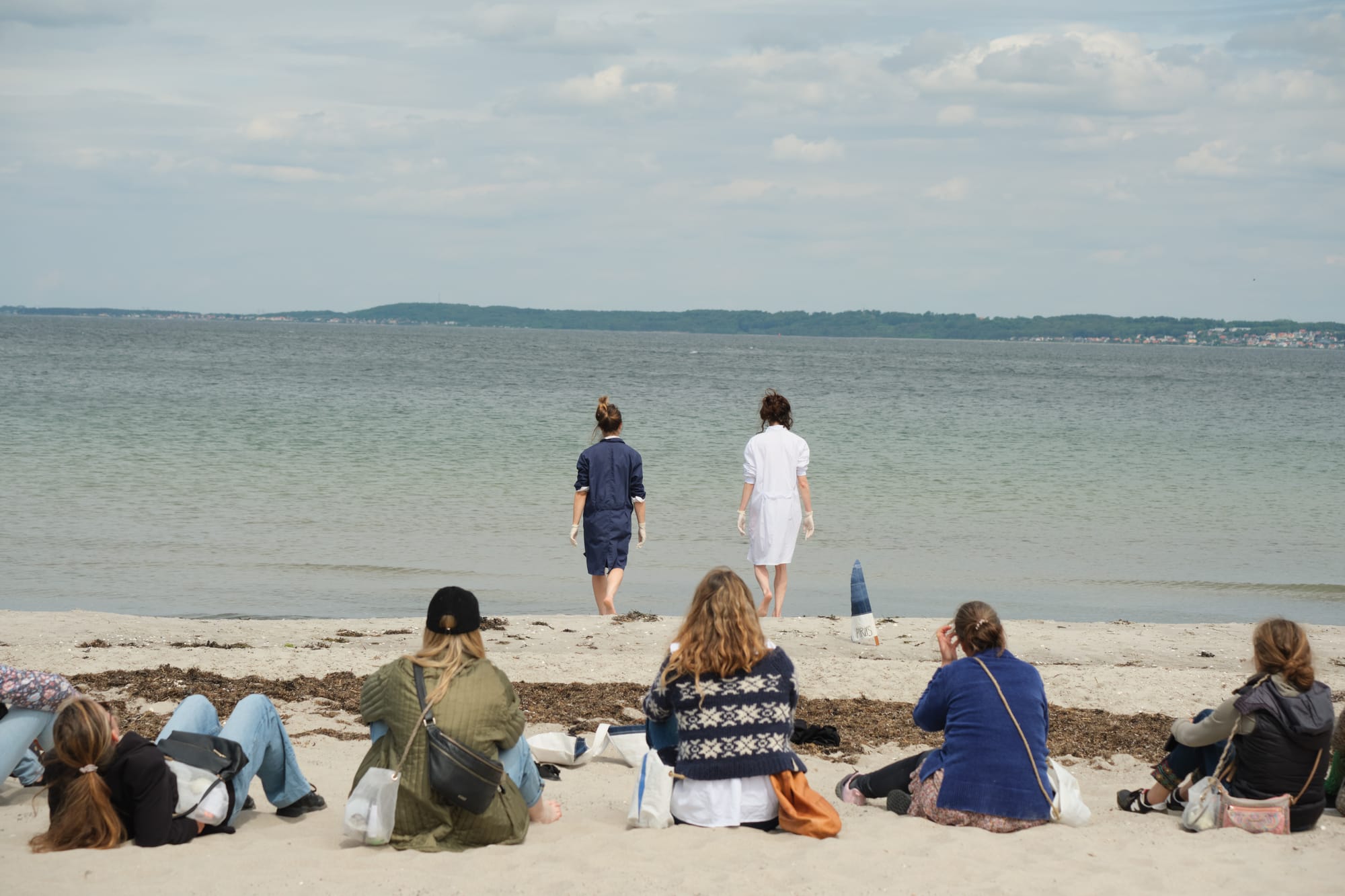
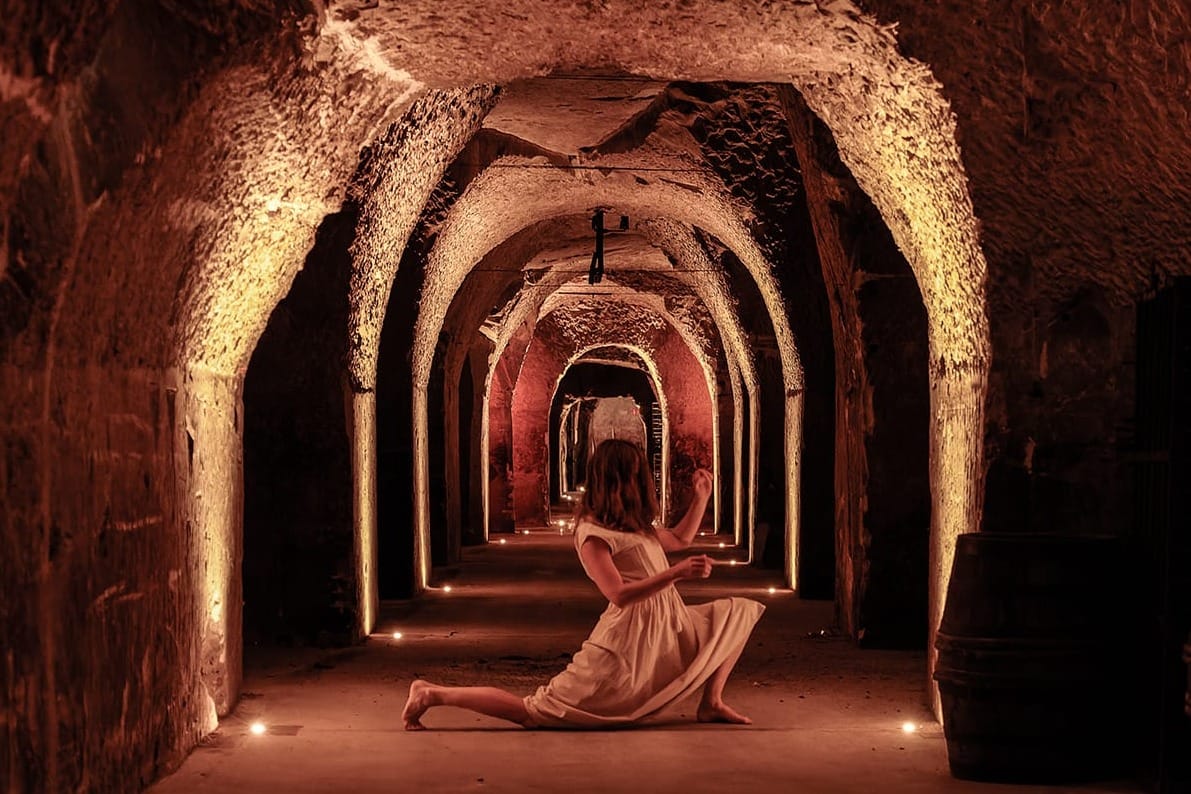
Structures: a hymn to the physical expression of circus bodies
Originally from Denmark, Mille Lundt is a performing arts author settled in Belgium. She studied theatre in Copenhagen, then turned to the circus, following courses at AFUK, Havana, Moscow and Kyiv schools. She then graduated from ESAC in Brussels and worked with numerous choreographers, touring around the world. She develops her creations for atypical spaces and theatres, and regularly invites artists to collaborate on her multidisciplinary projects.
In the context of the Hand to hand project, she created several different presentations of her Structures, a series of contemporary in-situ performances inspired by the observation of the French champagne making during her residency in Joseph Perrier’s firm vineyards of Champagne. Structures emerges as a living canvas in every different context where it has been presented, as a physical expression of multiple or as a solo circus body. As a performative landscape output, the piece tests the boundaries between land and body, and sound and images, combining the craft of using nature and respect for the environmental context.
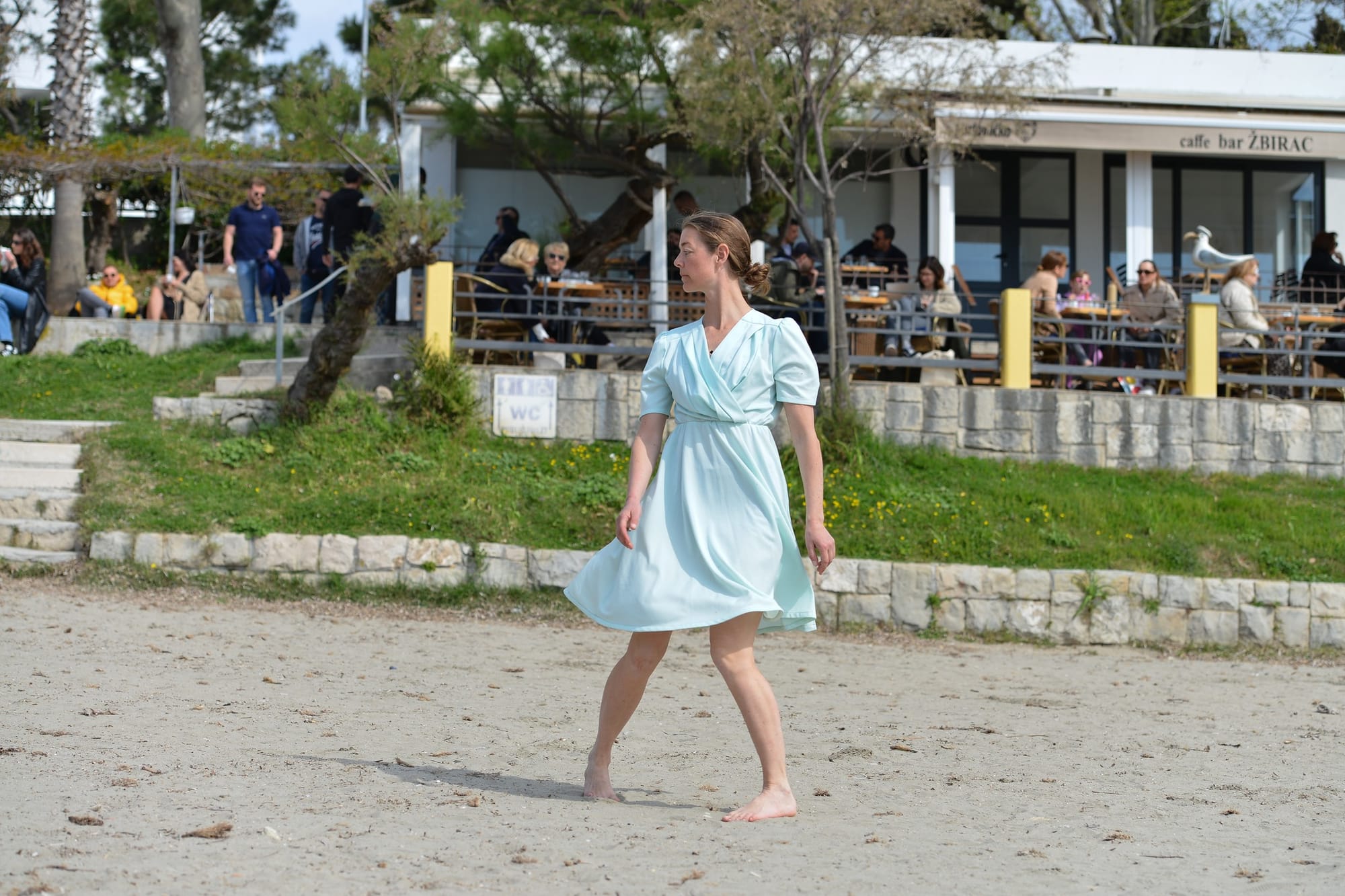
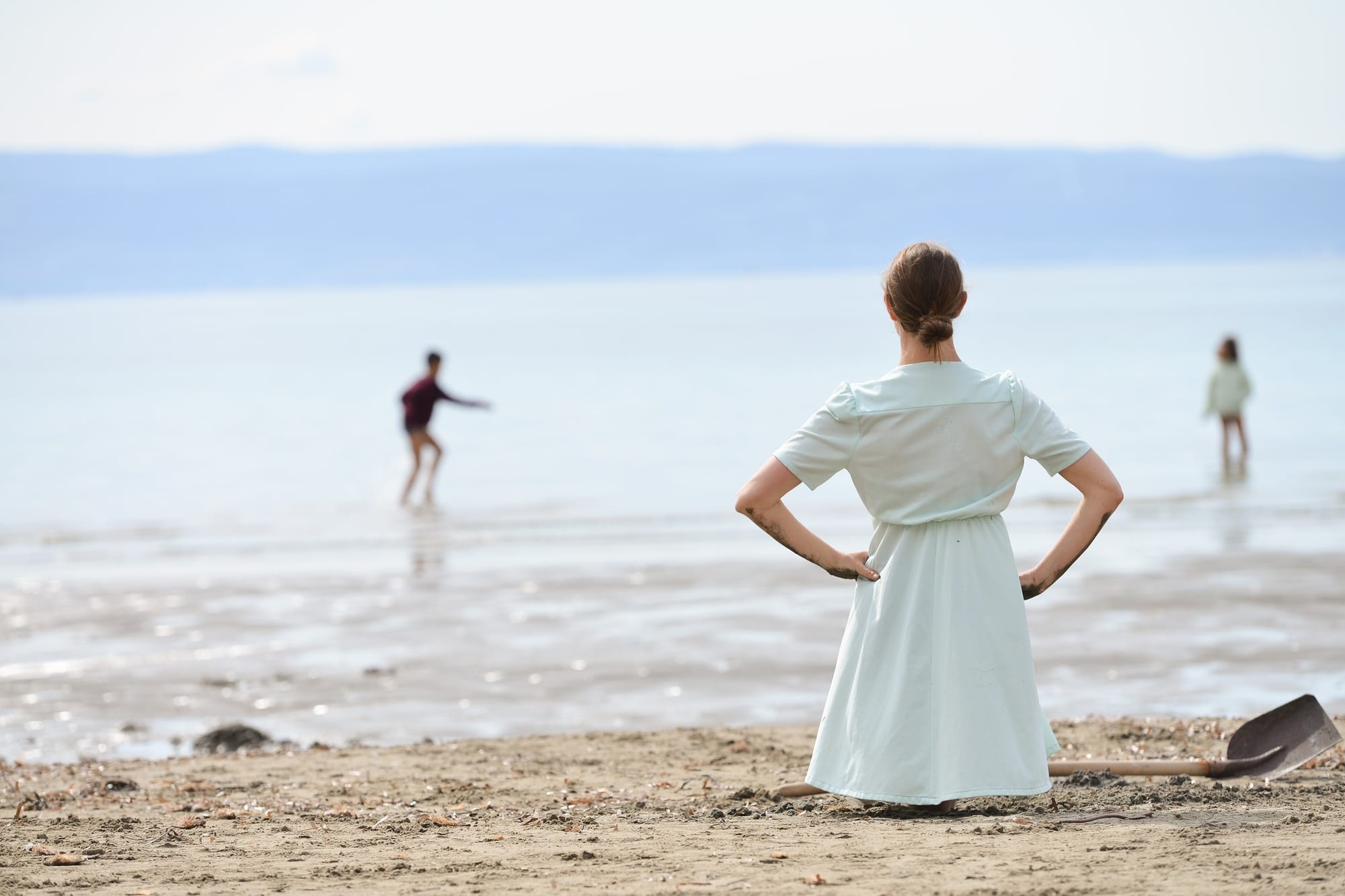
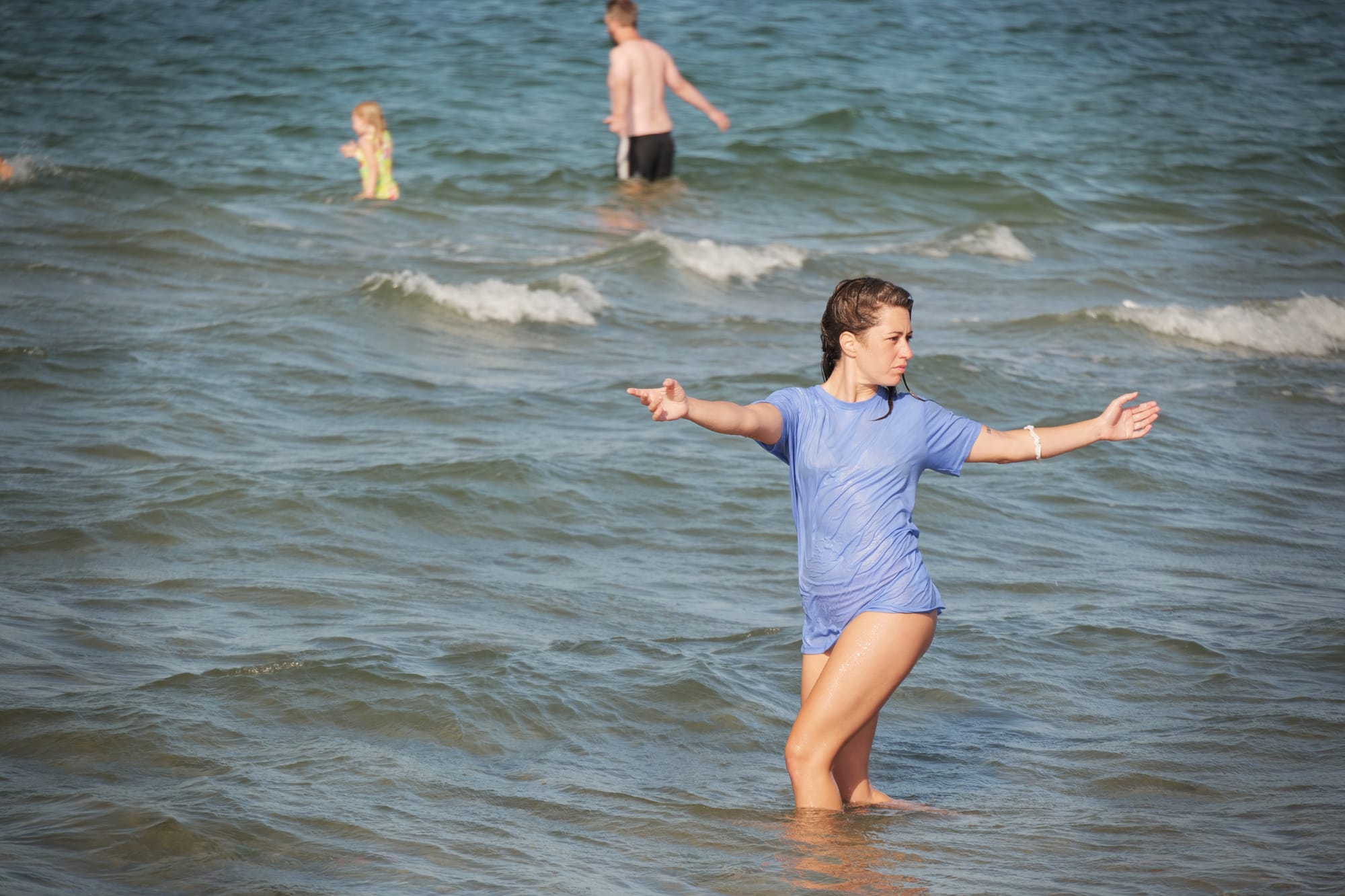
Remembering a love season. The interactive in-situ nostalgia of Baby, Don’t Hurt Me.
Clara Cortés Soler is a Spanish circus artist specialised in fixed trapeze, although she grounds her artistic research by mixing new technologies with a clear retro aesthetic gaze from the ’90s. After graduating from Barcelona's University of Fine Arts, she lived in the Netherlands to study circus and performance art at the Fontys Academy of Circus and Performance Art in Tilburg. She is interested in new formats and the hybrid stages, colouring the circus arts with innovative impulses from the fine arts.
In the context of Hand to hand, she researched in a residency at the Ston saltworks of Split. There, in Croatia, she shaped the multidisciplinary itinerant installative performance Baby, Don’t Hurt Me, a one-on-one encounter between the performer and the audience, but also a collective experience for a small group of 20 viewers. In the itinerant Baby, Don’t Hurt Me, through voice and sound, the audience uses their own mobile phones to be guided into this performative walk. By interacting and following Clara’s voice instructions, the narrative explores the theme of romantic intimacy, love and care in relation to the sea.
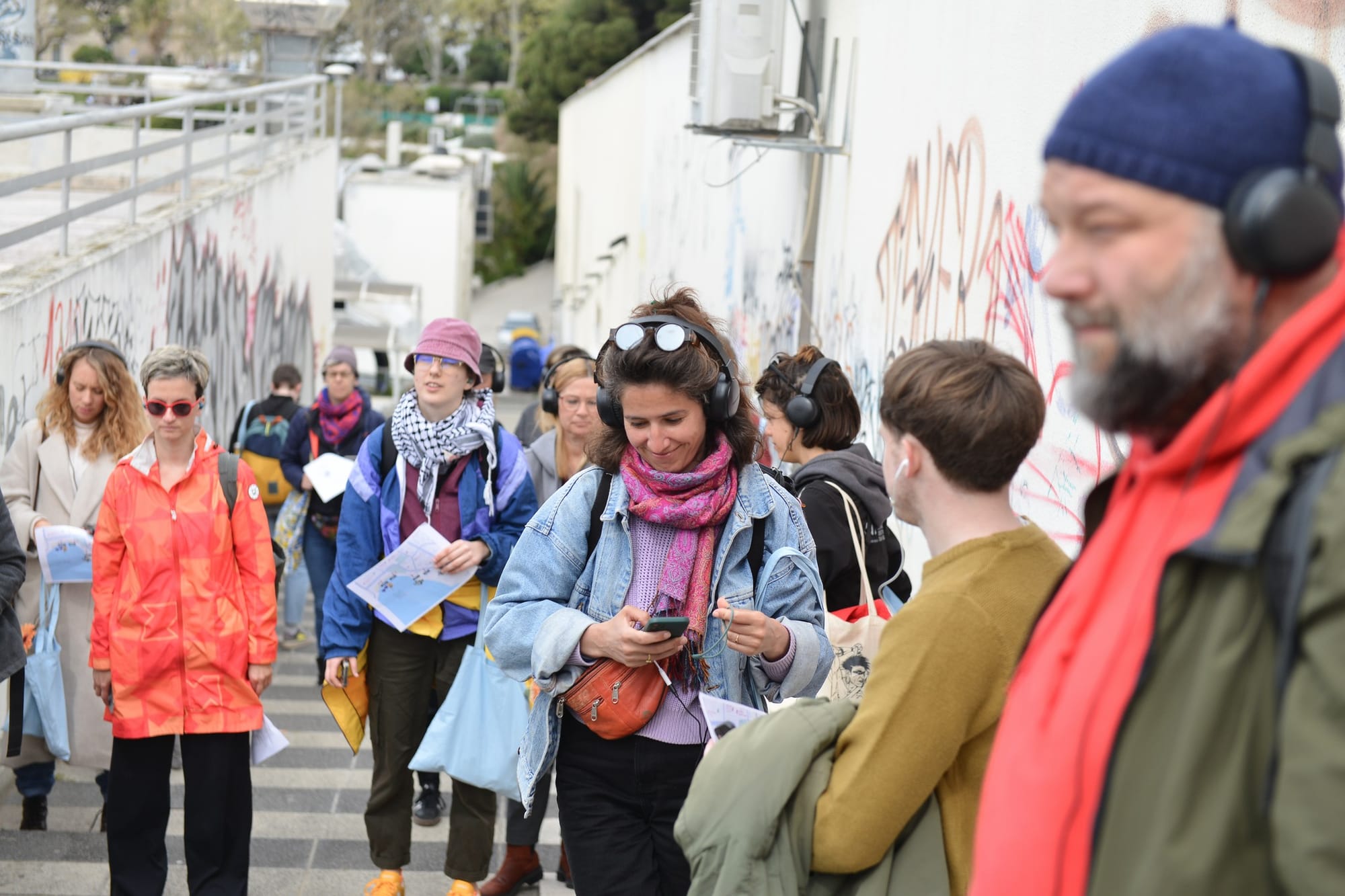

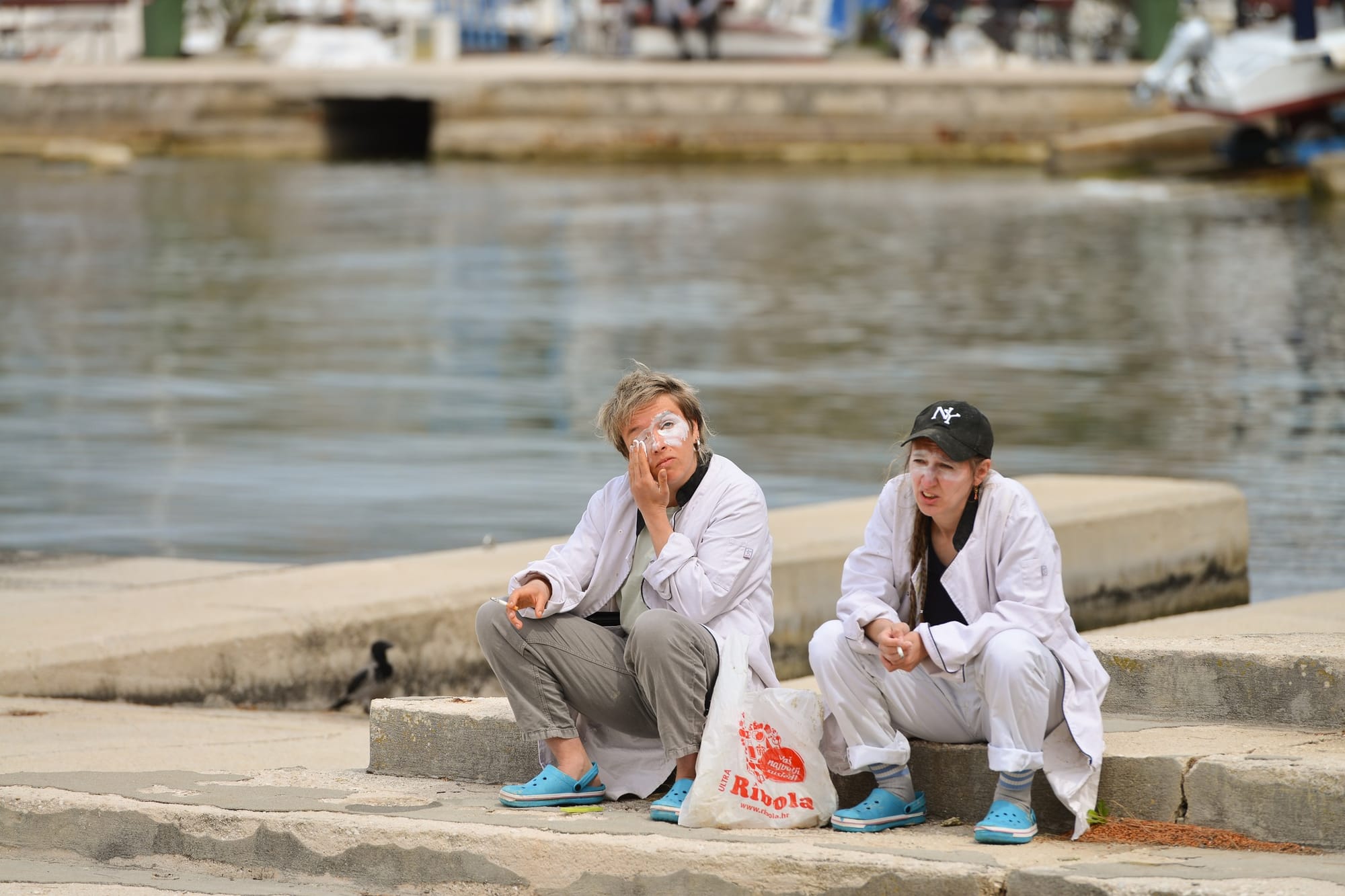
Slow Down: clowning the busy life of workers at the margins of Western society
Marianna De Santis is an Italian hula hoop and clown artist trained at FLIC circus school and Ésacto’Lido. Performer for several companies such as Gandini Juggling, La Barque Acide, La compagnie Nadère Arts Vivants, and Martin Zimmerman, she has now been working for over ten years in her own style, where the simple hula-hoop trick is sometimes remembered in a corner of her brain. She is also a coach, artistic director and teacher. She created her solo Mother.Woman.Artist and works with Cie Avec Moi, Compagnie d'Elles and Les Tenaces.
Perrine Budan became a hula hoop and clown artist after studying philosophy and European studies at the university. Born in France and self-taught, she trained with artists and worked on acting and clowning with Raymond Peyramaure, Eric Blouet and Bérangère Lacaze. She now teaches as a juggler and a clown, performs with the hula-hoop collective Cie Avec Moi, and leads her own creations with her company Debout Dehors.
After the 2024 year of Marianna’s pregnancy, Perrine and Marianna performed their Hand to hand creation, Slow Down, a circus-like and sensitive performance about the hyperactivity of life, for the first time together in Split. The creation process started with a two-week immersion residency in the salt marshes of Ston, Croatia. Perrine and Marianna took inspiration from these workers, from the labour force they produce with their bodies, from their position and dialogue within all these elements that are larger than us and out of control (wind, rain, temperature) and from the relationship between the economic sector and its environment (sea).
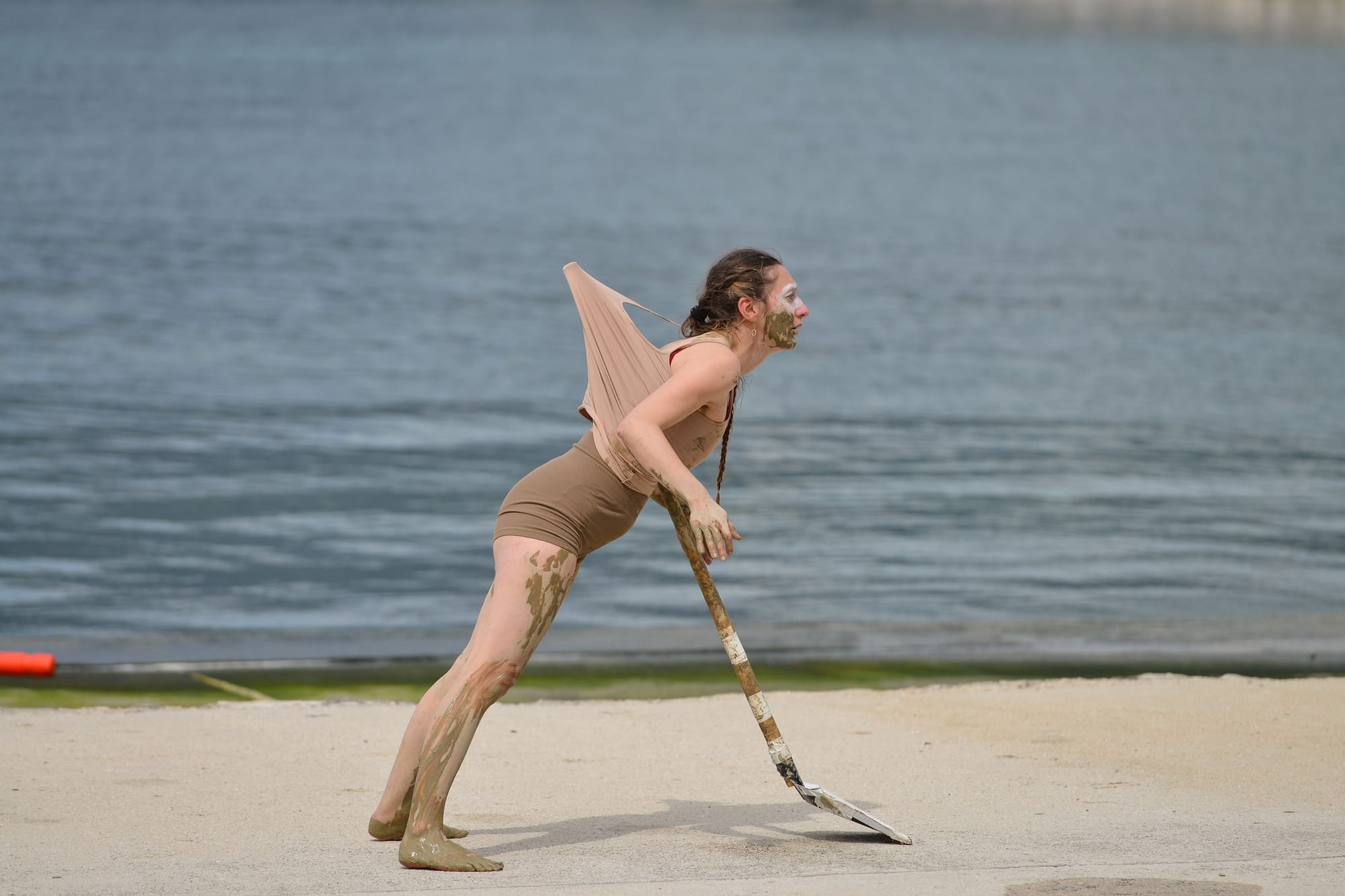
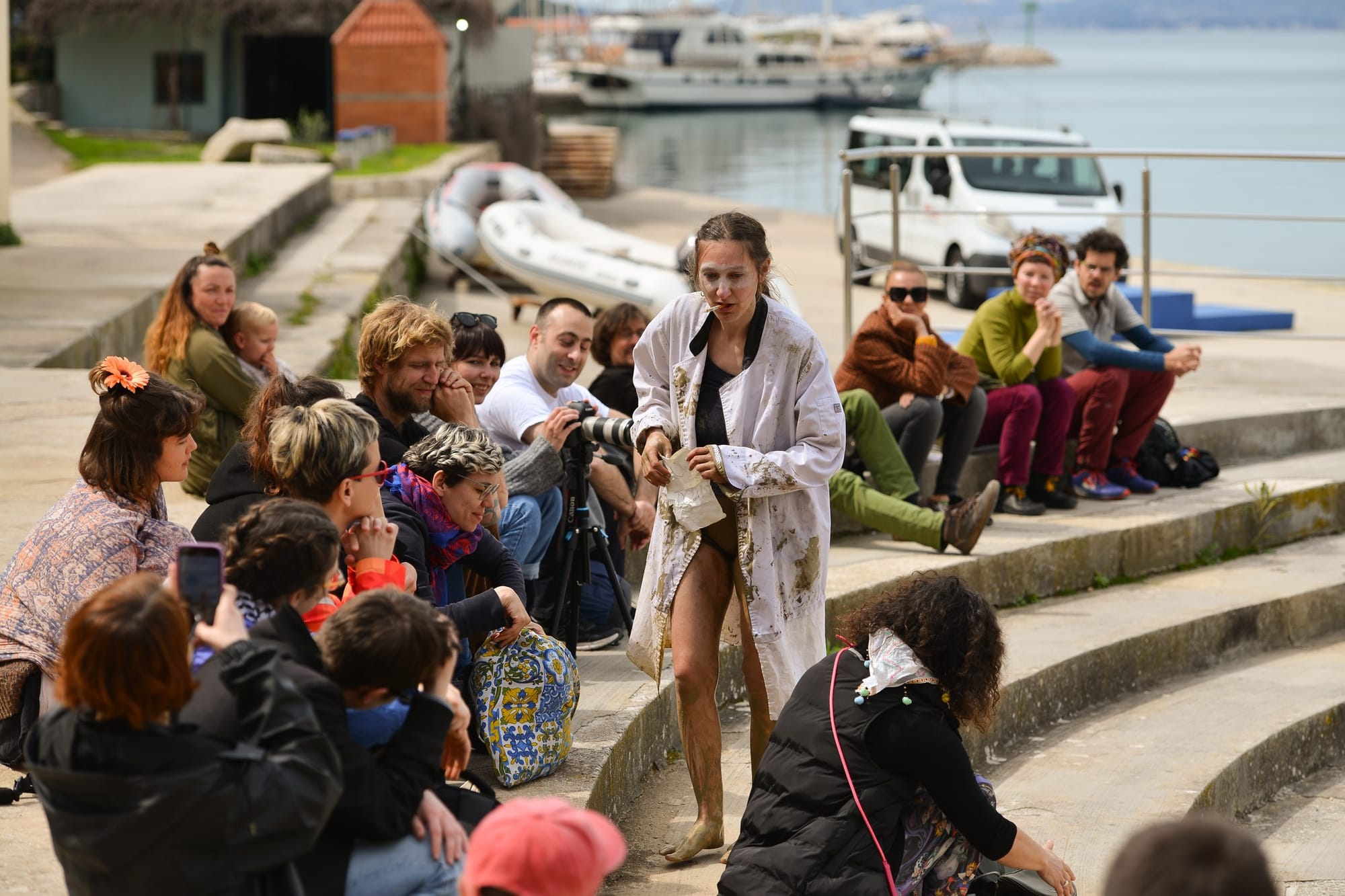
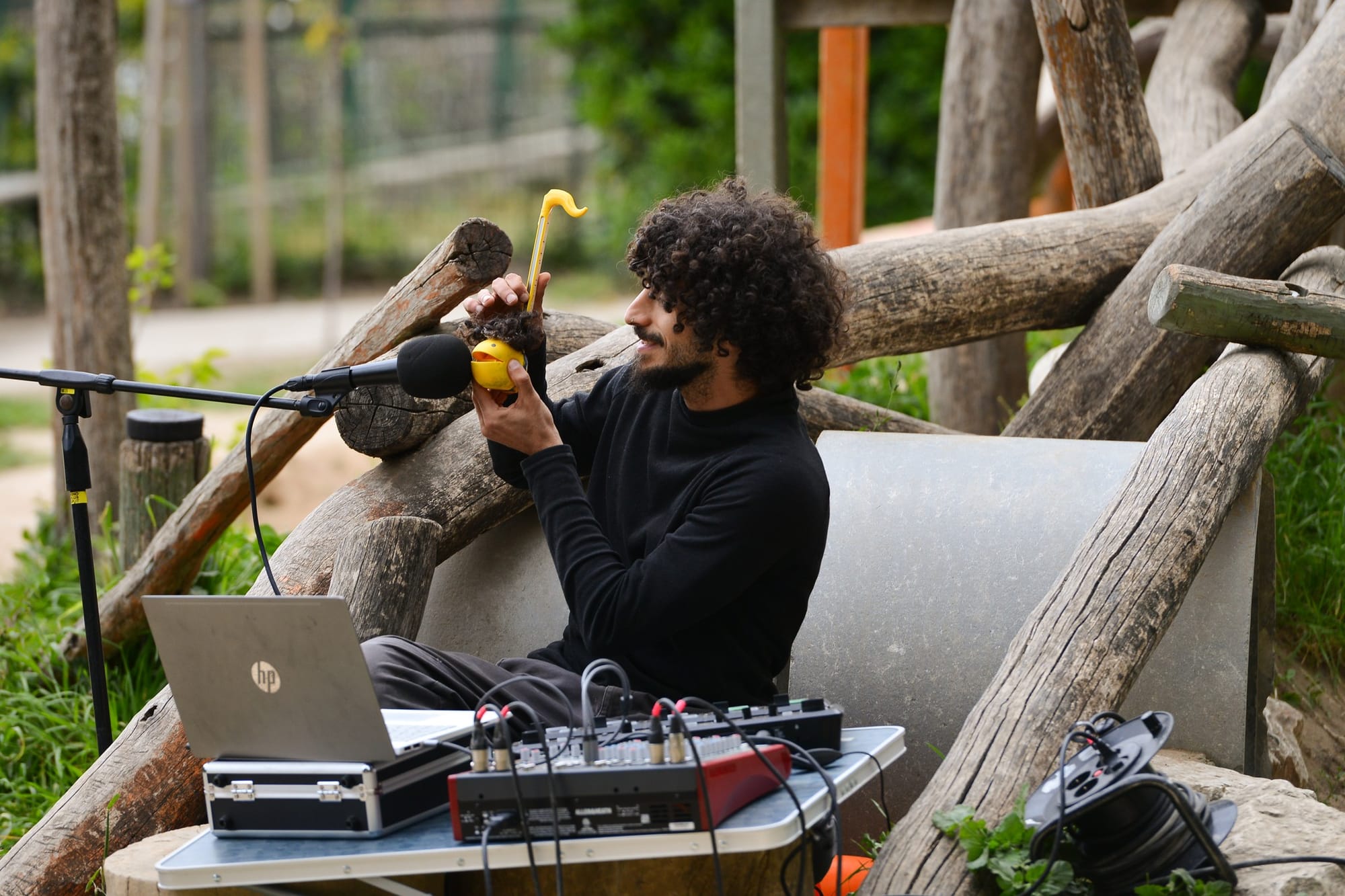
Sar-Tan: a performative radio for distracted humanity
Amir Guetta is a French-Israeli acrobat specialised in acrodance, verticalism and aerial acrobatics. After exploring dance, capoeira, martial arts, parkour and the fluidity of movement, he explored circus arts, creating his own shows and travelling the world. He has worked with a number of different companies, drawing on his talents as an acrobat, dancer and musician. Each artistic collaboration has shaped his artistic journey in a unique way. He sees art as a voice for change and as a platform for raising awareness of societal issues.
In his in-situ performance, Sar-Tan, we enter into a sci-fi atmosphere, questioning the ways humans are destroying the natural balance of the world and consuming it to the end. Amir plays freely, mixing live music, acrobatics, dance, and balance, telling the story of the destruction of our planet. The performance draws inspiration from the exploitation of codfish in the Portuguese city of Ílhavo during an immersive residency at a codfish packaging factory. Encouraging audience participation and fostering a sense of togetherness and shared responsibility, Sar-Tan questions how humanity can make a difference with small steps towards a better environment.

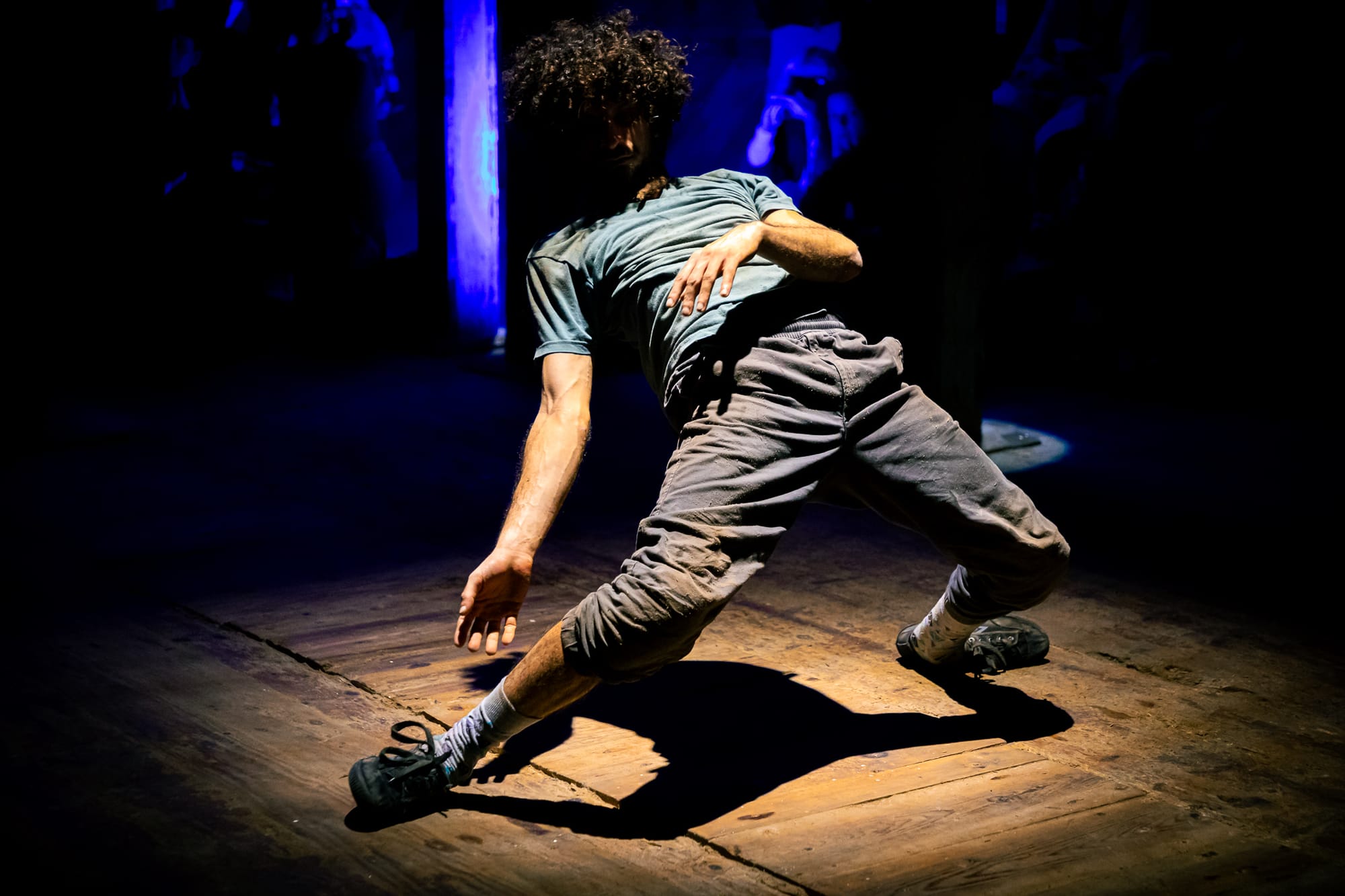

Caesarea: ink and paper as living’ performative scenography tools
Lucía Heege Torres is a Spanish circus artist specialised in swinging trapeze and contortion. After graduating from the School of Arts and Design in Barcelona, she trained at FLIC circus school and CNAC. Her first authorial piece, Kraquement, was a finalist at circusnext.
During the Hand to hand trajectory, she shaped Caesarea, a contemporary in situ performance inspired by an immersion residency in the paper factory Fila Arches in France. Researching cellulose, water, pigments, sounds, and human perception, Caesarea is a burlesque critique of how human beings set themselves at the centre of the world, even in the time of an environmental crisis. Playing with the contrast generated by the white of paper and thick, black paint, she underlines the beauty of non-invasive nature and the disruptive power of anthropocentrism settled in our modern way of living.
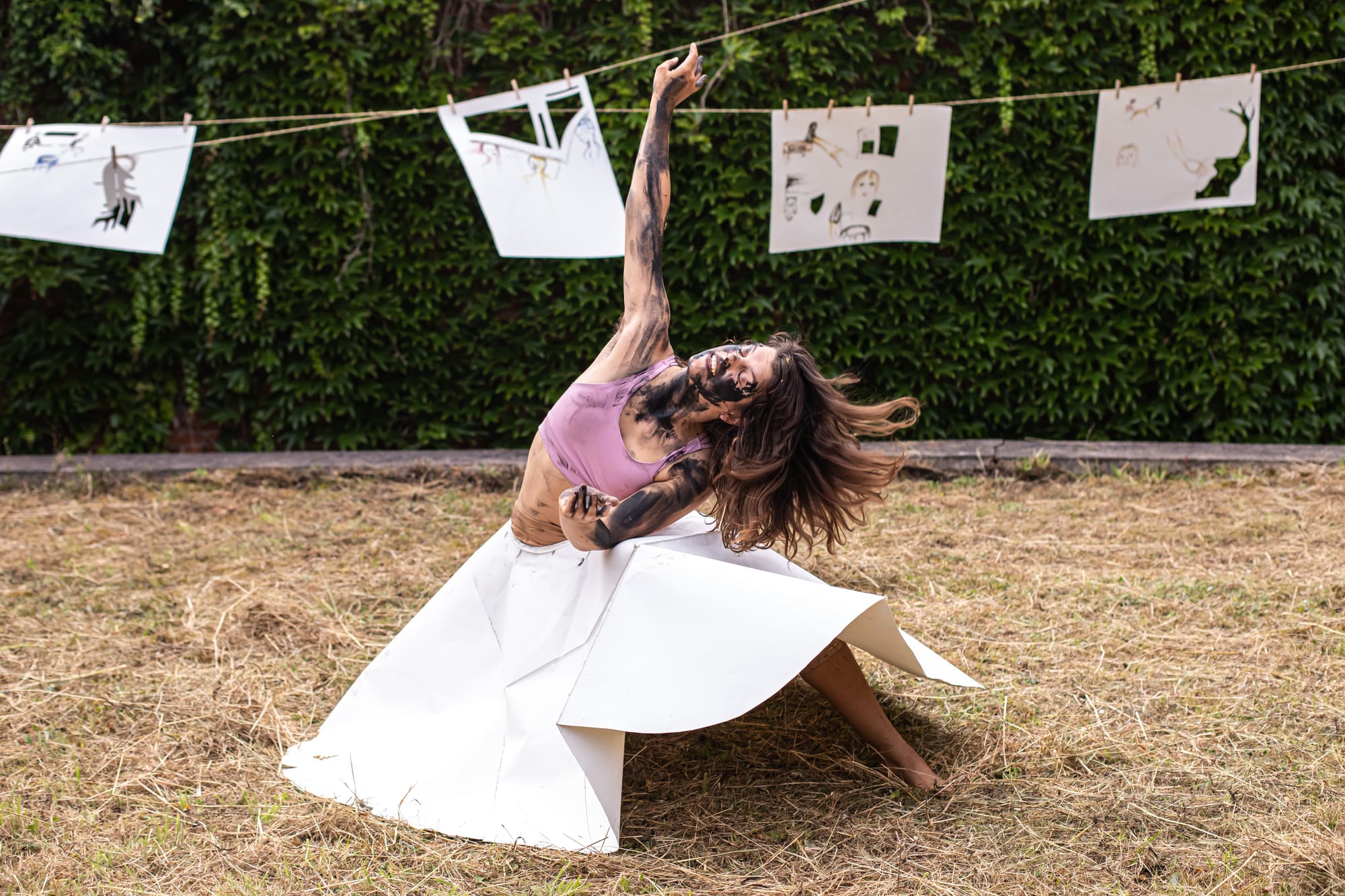
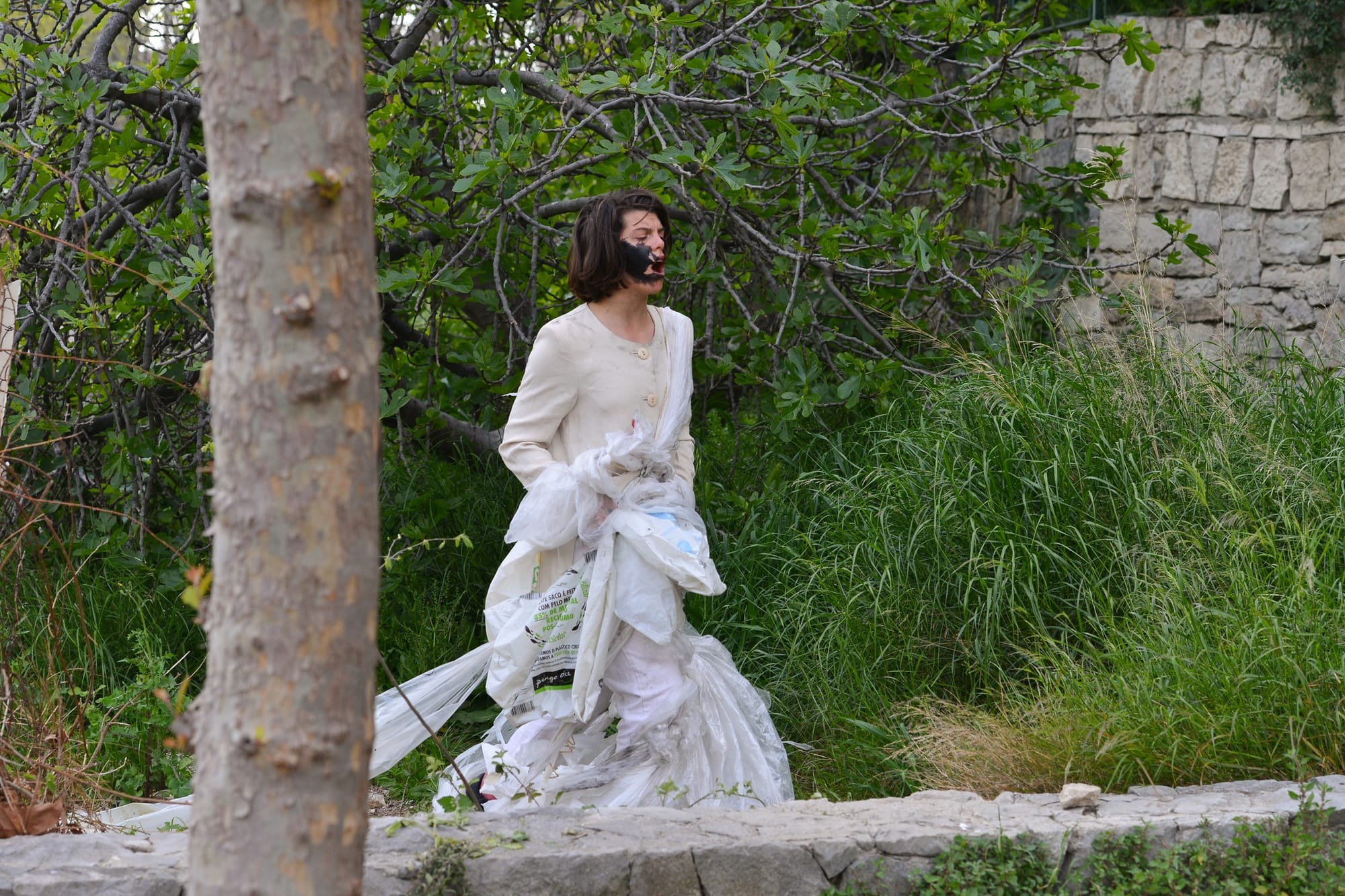
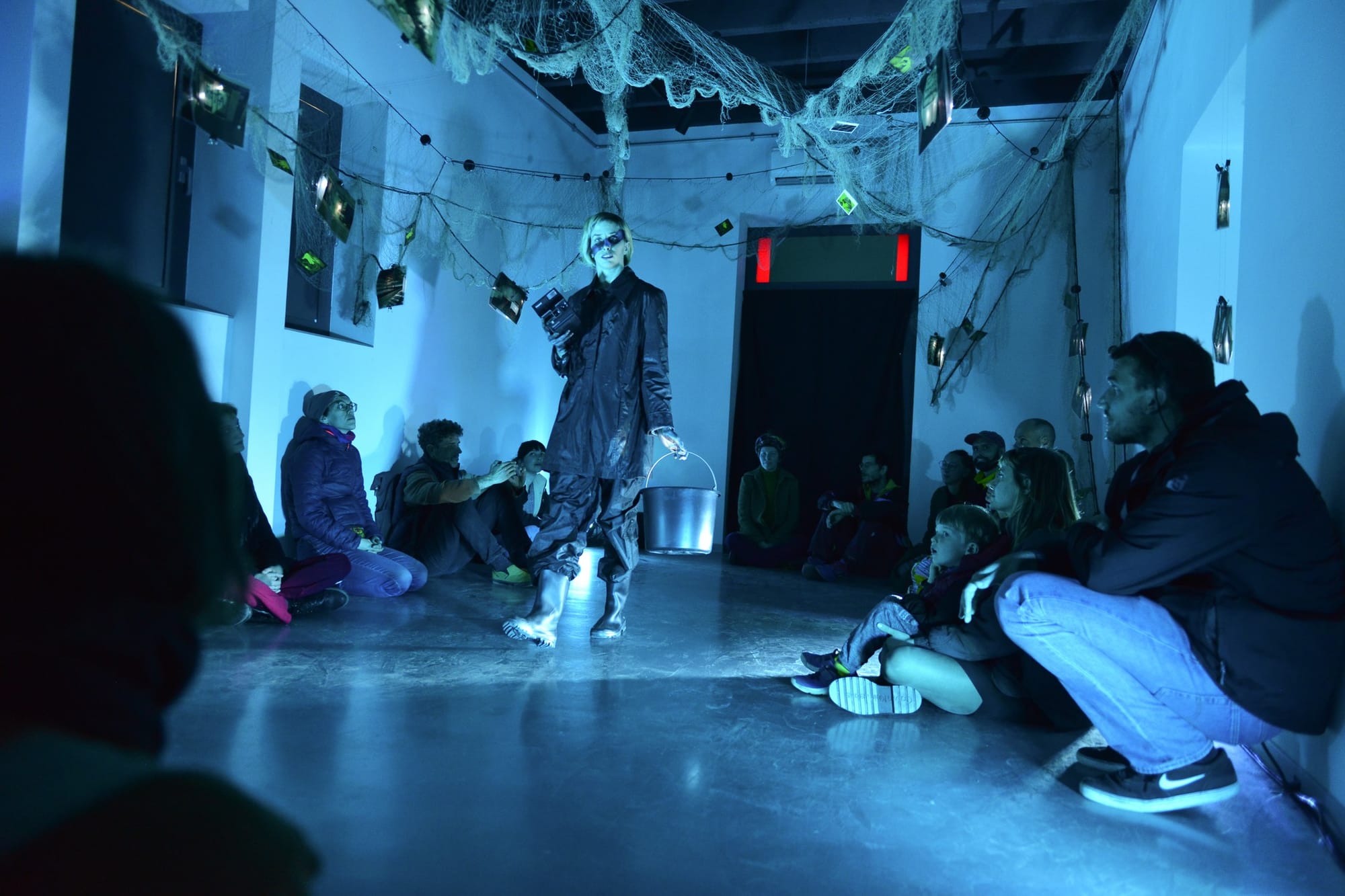
Amphibian Matter: Android Memories from an alternative future
Juana Ortega Kippes is an Argentinian-Spanish dancer, verticalist and contortion artist. Trained in Hatha Yoga in India, and specialised in hand balancing and contortion in Brussels with Slava Kukushkin (ESAC), and in contemporary dance at DansCentrumJette, she then moved to Toulouse, where she continued her training at Ésacto’Lido with Pascal Angelier. Interested in buto dance, through which she developed her contortion skills and explored experimentation. She has worked with artists such as Jérôme Thomas and the Impulsos company. Based in France, she develops workshops and creations with her own company, JÅNIKA.
Shaped during the Hand to hand project, her participatory performance Amphibian Matter is inspired by the exploitation of cod in the Portuguese city of Ílhavo. Based on a documentary process that connects photography and circus, the project merges acrobatics, contortion, dance and Polaroid photographs, inviting the audience to build together a space for reflection. Simple polaroids create a unique collection of detail-portraits, as if every audience member contributed to a new shared perspective on reality. In the documentary process, Juana explored the Portuguese saudade feeling, connecting it to the universal concept of "nostalgia" – the emotion that humanity carries, staying stuck in a reality that does not lead to change. The goal is to turn it around: to propose a framework in which a different scenario is possible.
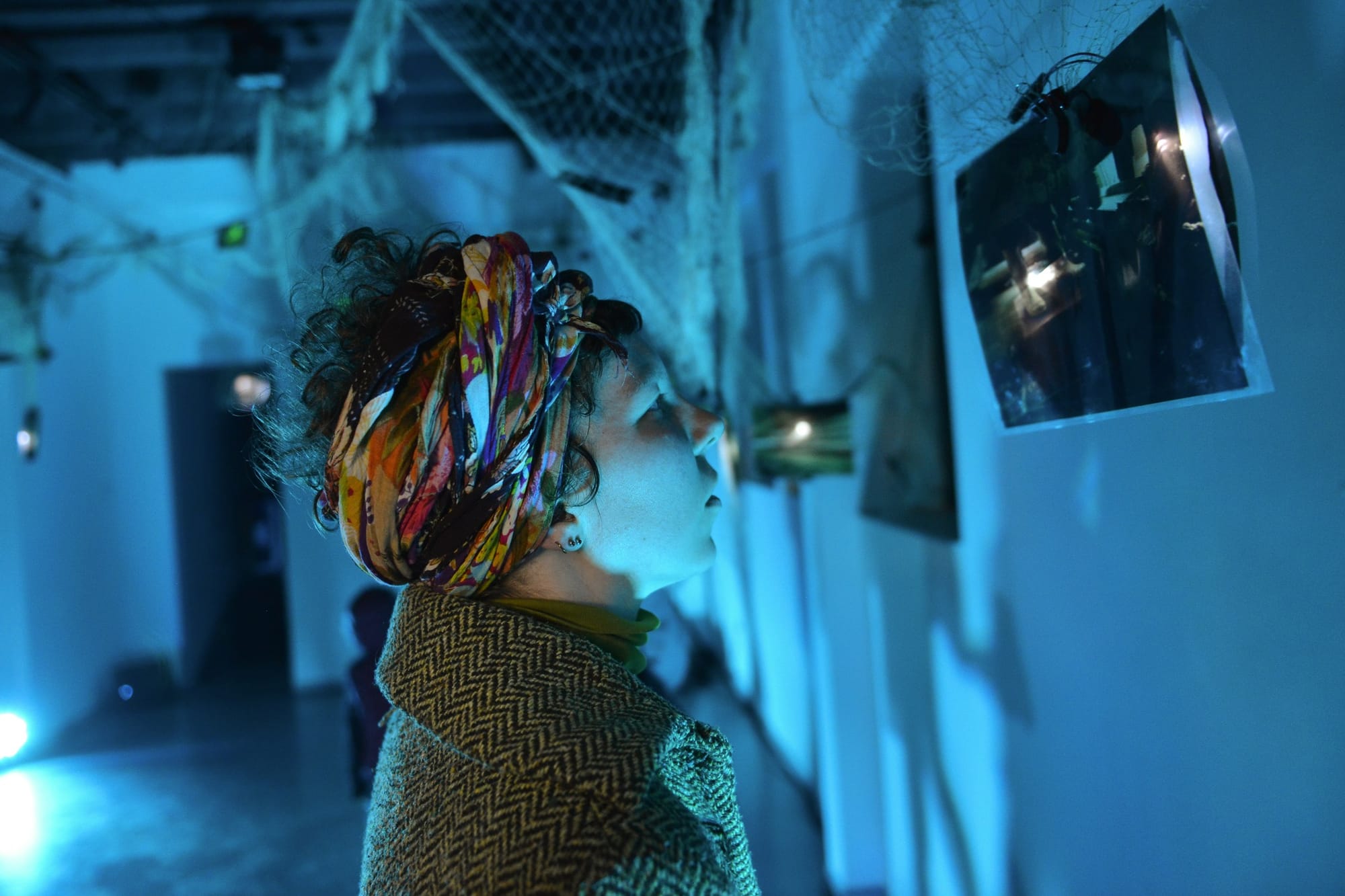
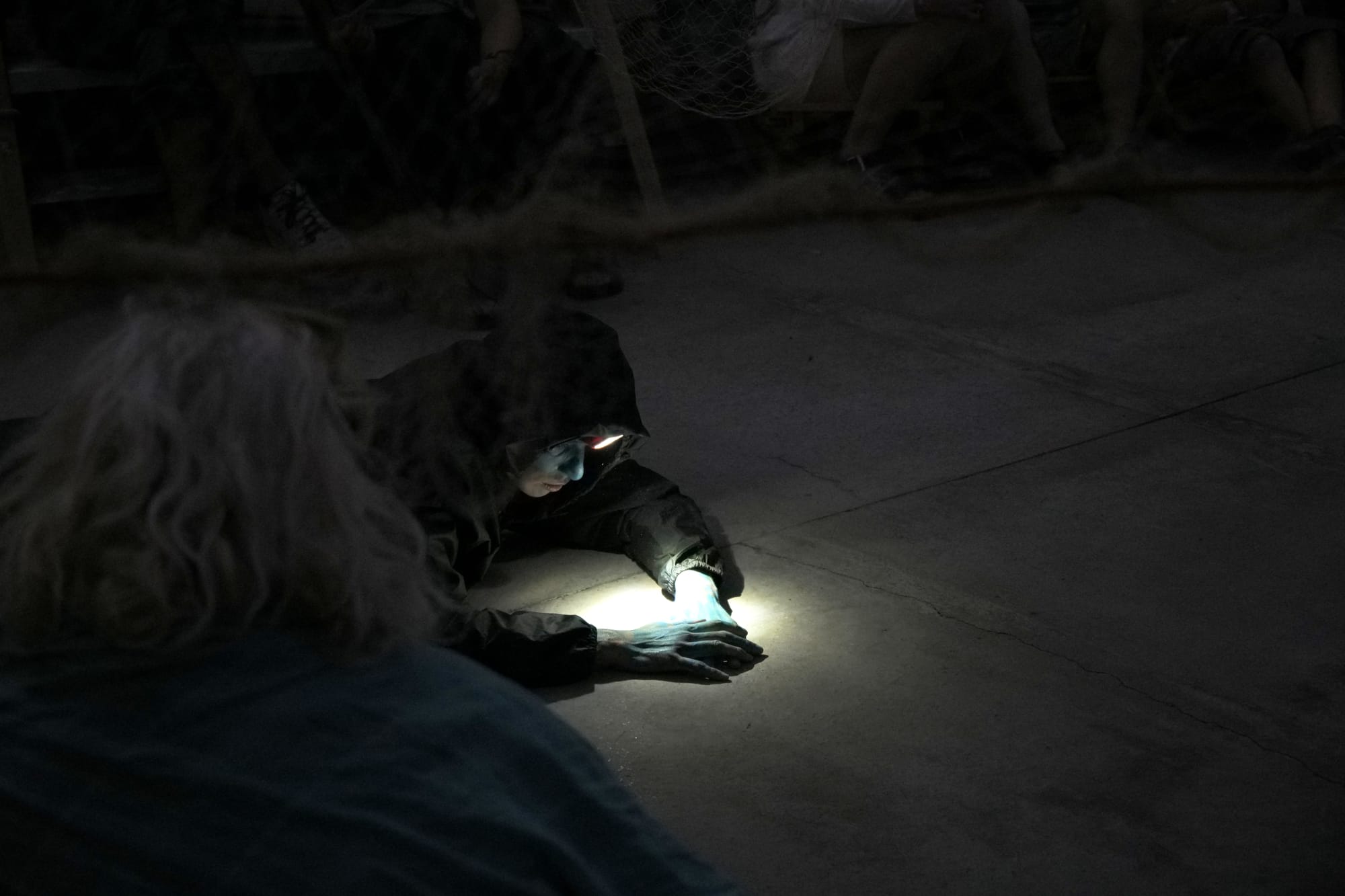
Hand to hand is co-funded by the Creative Europe Programme of the European Union. Le Palc (FR) leads the project in partnership with ROOM 100 (HR), Bússola (PT), and Helsingør Teater (DK).
Associated partners ARTCENA, National Centre for Circus, Street and Theatre Arts (FR); The Centre National des arts du cirque (FR), The French Institute; The municipality of Ilhavo and LEME festival (PT); The Furies festival (FR).
Local partners Joseph Perrier (FR); Papeterie Arches SAS (FR); Solana Ston (HR); Maritime Workshop Hall 16 (DK); Fisherman Soren Jacobsen (DK); Codfish Harbor (PT); Institute Georges Chappaz (FR); The Faculty of Science in Split -the Environmental Physics Department (HR); The CIEmar- Centro de Investigação e Empreendedorismo do Mar (PT); Øresundsakvariet- Maritime research institute (DK)
